AMD Vision – The $399 Brazos Notebook Platform Preview
Brazos Platform and Chip Architecture
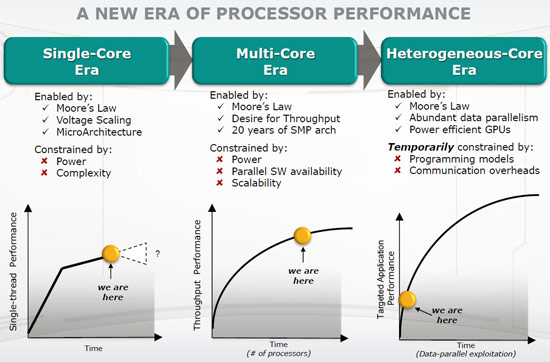
AMD explained to us that single-core and mutli-core CPUs served their purpose when they were launched, but as time went on our needs and demands have changed. Multi-Core CPUs are being rather power hungry and not too many applications today take advantage of the six cores seen on today’s high-end desktop computers. AMD Vision ushers in a new era of processors that will be known as heterogeneous-core CPU’s.
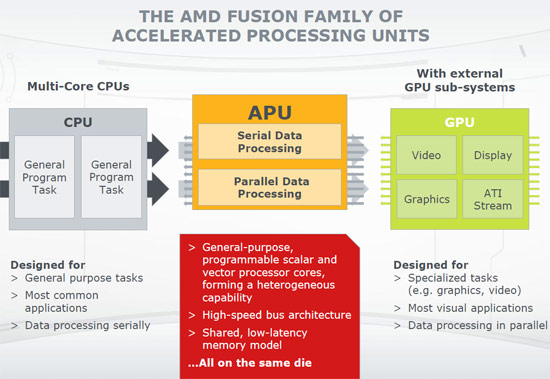
Here we can see a slide on how AMD ‘proves’ that an APU is the way to go as it can do both serial and parallel data processing on one die.
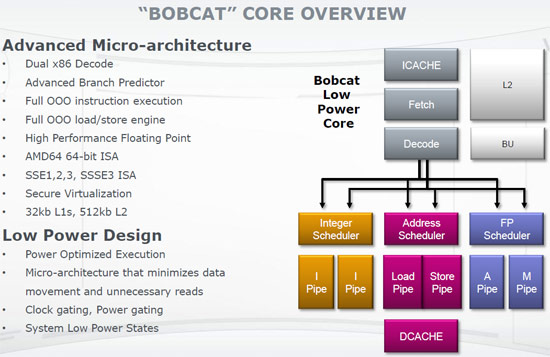
Here is a detailed look at the upcoming Bobcat core micro-architecture that is being used on the Brazos processor series.
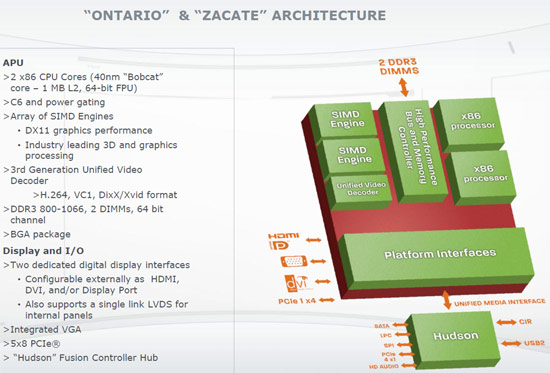
AMD’s Ontario and Zacate processors are both part of the Brazos family and do share the same system and chip-level architecture. Both processors feature x86 processors based off the AMD ‘Bobcat’ architecture we mentioned earlier. Ontario and Zacate also have a 3rd generation Unified Video Decoder that is similar to the one seen in AMD Radeon HD 6870 and 6850 video cards, but it is not identical.
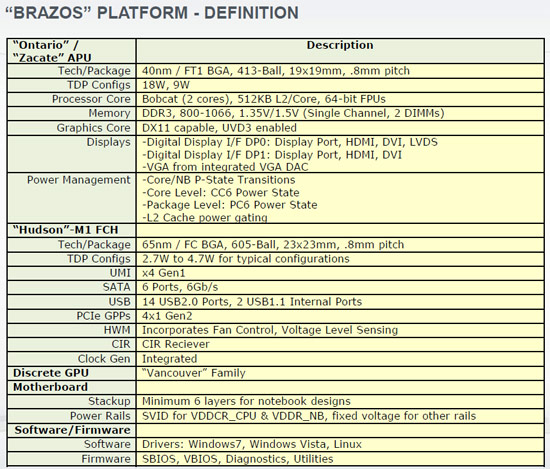
This slide gives a better look at the Brazos platform and what it has to offer. The one thing that stood out to us right away is that even though the platform uses two DDR3 1066MHz memory modules they only run in single channel mode. We figured that AMD would be running dual-channel memory for better performance, but that isn’t the case. The Ontario/Zacate APUs will be connected to the Hudson Southbridge I/O hub and that chip looks similar to the SB-800 that we saw on desktop boards not too long ago.
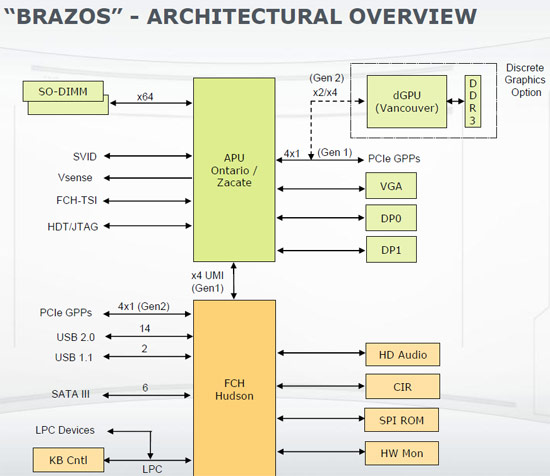
Here is a slide for those that like to know what the potential connections are for the APU and FCH on Brazos.
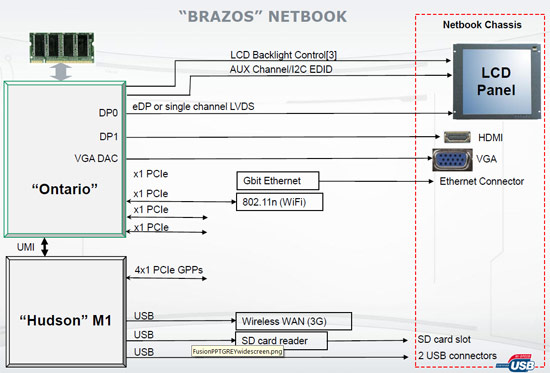
Here are some platform build-outs that AMD provided us to give us an idea on what notebooks using this system will look like. This is what you can expect if the notebook uses the graphics on the APU.
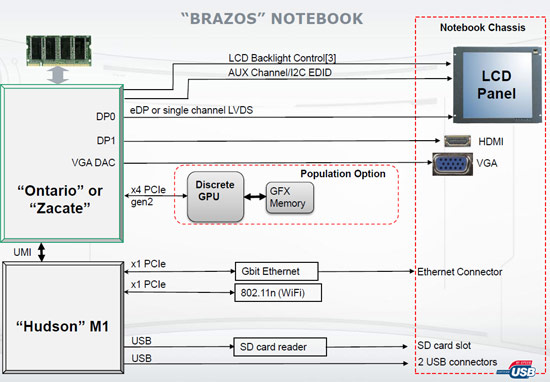
Notebook and Netbook hardware vendors can use discrete graphics thanks to a x4 PCIe Gen 2 bus if they choose to do so.

AMD says that the Brazos platform provides 10-50% more graphics performance than compared to notebook platforms that AMD released in 2010. The slide above shows PCMark Vantage and 3DMark Vantage performance results on Brazos versus Danube and Nile.
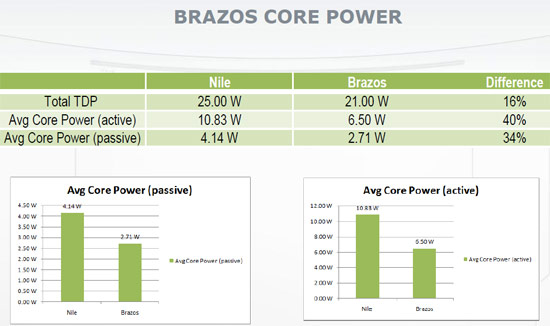
AMD said that not only was performance up, but so was battery life. They said that the they are seeing around 8.5 hours of battery life on development notebooks and that the total TDP of the system is just 21W. Not bad considering that Nile is shown as 25W. The idle or passive power is impressive though as they are showing a 34% difference! It looks like we’ll be able to work all day on a Brazos laptop!

Comments are closed.